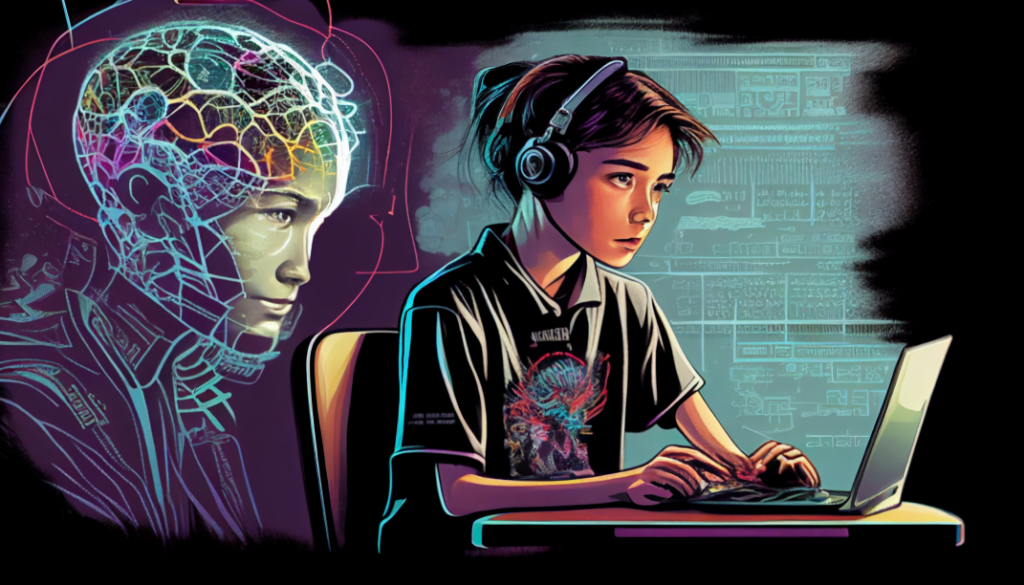Top 10 Ways AI Integration is Revolutionizing Student Assessment and Feedback
In today’s rapidly evolving educational landscape, AI integration is transforming the way educators assess students and provide feedback. As we move further into 2024, this technological shift is becoming more pronounced, with AI offering innovative solutions that enhance learning outcomes and streamline educational processes. From automated grading systems to personalized feedback, AI integration is reshaping the future of education.
1. AI Integration in Automated Grading Systems
AI integration in automated grading systems is one of the most significant advancements in AI in Education. These systems leverage machine learning algorithms to analyze student submissions, provide instant feedback, and identify areas for improvement. According to a study published by the International Journal of Educational Technology, automated grading systems can reduce grading time by up to 60%, freeing up educators’ time for more critical instructional tasks.
Efficiency and Consistency
AI-driven grading tools ensure consistent application of grading criteria, reducing human error and subjectivity. This consistency is crucial, particularly in large classes where maintaining uniformity in grading can be challenging.
Immediate Feedback
Automated systems can provide instant feedback, allowing students to understand their mistakes and learn from them promptly. This immediate reinforcement enhances the learning process, making it more dynamic and responsive.
2. Personalized Learning Pathways Through AI Integration
AI integration has revolutionized the concept of personalized learning by enabling educators to tailor educational experiences to individual students’ needs. By analyzing vast amounts of data on student performance, learning preferences, and progress, AI can recommend specific resources, assignments, and learning activities that target each student’s unique challenges.
Data-Driven Personalization
AI tools use data analytics to monitor student progress in real-time, adjusting learning paths to ensure that students receive the right level of challenge. A report by McKinsey & Company highlights that personalized learning can increase student engagement by 20%, leading to better academic outcomes.
Student-Centered Learning
Personalized learning pathways foster a more student-centered approach, where instruction is tailored to accommodate diverse learning styles and paces. This approach helps students stay motivated and engaged, particularly those who may struggle with traditional one-size-fits-all methods.
3. Enhanced Feedback Mechanisms with AI Integration
AI integration has greatly enhanced the quality and specificity of feedback provided to students. Traditional feedback methods often involve generic comments that may not address individual student needs. However, AI-driven tools offer detailed, actionable feedback that guides students toward improvement.
Detailed Error Analysis
AI tools can analyze student work at a granular level, identifying specific areas where errors occur and providing targeted suggestions for improvement. According to research by the University of Edinburgh, students who receive AI-generated feedback show a 25% increase in assignment scores compared to those who receive traditional feedback.
Continuous Feedback Loop
AI enables a continuous feedback loop, where students can receive and act on feedback throughout the learning process. This ongoing interaction fosters a growth mindset and encourages students to take ownership of their learning.
4. AI Integration in Predictive Analytics for Student Performance
Predictive analytics powered by AI integration is becoming an essential tool for educators to anticipate student performance and intervene when necessary. By analyzing historical and real-time data, AI can identify patterns that suggest a student may be at risk of underperforming.
Early Intervention
Predictive models can flag students who are likely to struggle, allowing educators to provide additional support before problems escalate. According to a study by Pearson, predictive analytics can improve student retention rates by up to 15%.
Informed Decision-Making
Educators can use insights from predictive analytics to make informed decisions about curriculum adjustments, resource allocation, and instructional strategies, ultimately enhancing overall educational outcomes.
5. AI Integration in Adaptive Testing
Adaptive testing, made possible through AI integration, represents a significant advancement in educational assessments. Unlike traditional tests, which are static, adaptive tests adjust the difficulty of questions based on the student’s previous answers, providing a more accurate assessment of a student’s knowledge and skills.
Precision in Assessment
Adaptive testing allows for a more precise measurement of student abilities, as the test dynamically adjusts to challenge students appropriately. Research from the Journal of Computer-Based Testing shows that adaptive testing can improve the accuracy of assessments by 30% compared to traditional methods.
Reduced Test Anxiety
Since adaptive tests adjust to the student’s level, they can help reduce test anxiety by preventing students from facing questions that are too difficult for their current understanding. This leads to a more accurate representation of their abilities.
6. AI Integration in Reducing Bias in Assessments
Bias in assessments has long been a challenge in AI in Education, often resulting in unfair grading or misjudgment of a student’s capabilities. AI integration helps mitigate this issue by using algorithms that focus purely on content, removing human biases related to gender, ethnicity, or socio-economic status.
Objective Assessment
AI systems can be programmed to evaluate student work based on predefined criteria, ensuring that all students are judged solely on the quality of their work. A study by the University of California, Berkeley, found that AI-driven assessments can reduce grading bias by 25%, leading to fairer outcomes.
Equity in Education
By reducing bias, AI contributes to greater equity in education, ensuring that all students have an equal opportunity to succeed regardless of their background.
7. Real-Time Feedback with AI Integration

AI integration facilitates real-time feedback, which is essential for effective learning. Traditional feedback mechanisms often involve delays that can hinder the learning process. With AI, students receive immediate feedback, enabling them to correct mistakes and reinforce learning as they progress.
Instantaneous Learning Adjustments
Real-time feedback allows students to make immediate adjustments to their learning strategies, improving their understanding of the material. The EdTech Research Group reports that students who receive real-time feedback show a 30% improvement in comprehension compared to those who do not.
Interactive Learning Environment
The immediacy of AI-powered feedback creates a more interactive learning environment, where students are constantly engaged and can actively participate in their education.
8. AI Integration in Group Assessments and Collaboration
Group work is an essential part of modern education, promoting collaboration and teamwork. AI integration in group assessments ensures that each student’s contribution is fairly evaluated, fostering accountability and improving the overall quality of group work.
Individual Contribution Analysis
AI tools can analyze individual contributions within a group, ensuring that each student is graded fairly based on their input. This capability addresses common concerns about group work, where some students may contribute less but receive the same grade as more active members.
Enhanced Collaboration
By providing insights into group dynamics, AI can help educators identify strengths and weaknesses within groups, leading to more effective collaboration. According to a study by Harvard University, AI-assisted group assessments can improve collaboration quality by 20%.
9. Scalability of AI Integration in Large Classrooms
In large classrooms, maintaining a consistent and high-quality assessment process can be challenging. AI integration offers scalability, allowing educators to manage assessments for hundreds or even thousands of students simultaneously.
Consistent Assessment
AI ensures that all students, regardless of class size, receive consistent and fair assessments. This is particularly valuable in higher education institutions where class sizes can be large.
Time-Saving Efficiency
AI-driven assessments save educators significant time, which can be redirected towards other critical tasks such as curriculum development and one-on-one student support. According to the National Center for Education Statistics, AI tools can reduce the administrative burden on educators by up to 50%.
10. AI Integration in Mathematics: A Special Focus
The application of AI in mathematics is an area where AI integration has shown particular promise. Mathematics education has traditionally been a challenge for many students, with complex concepts requiring personalized and immediate feedback. AI tools are now being used to provide real-time problem-solving assistance, adaptive learning paths, and detailed analytics that help students overcome their mathematical challenges.
Adaptive Learning in Mathematics
AI tools in mathematics can adjust the difficulty of problems based on the student’s progress, ensuring that each student is working at the optimal level. This not only improves comprehension but also builds confidence in tackling more complex problems.
Real-Time Problem Solving
AI-driven platforms can offer instant solutions and step-by-step guidance, which is particularly beneficial in subjects like algebra and calculus. According to a report by the Bill & Melinda Gates Foundation, students using AI tools in mathematics show a 22% improvement in problem-solving skills.
Conclusion
AI integration is undeniably transforming student assessment and feedback in profound ways. From automated grading systems to real-time feedback and predictive analytics, AI is making education more personalized, fair, and scalable. As we continue to embrace these advancements, the potential for AI in Education will only grow, leading to a more innovative and effective learning environment.




